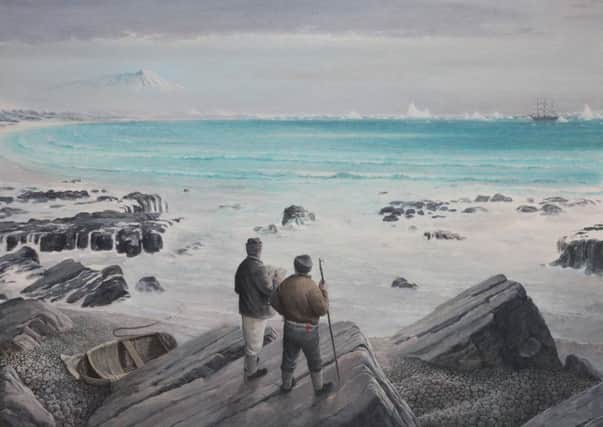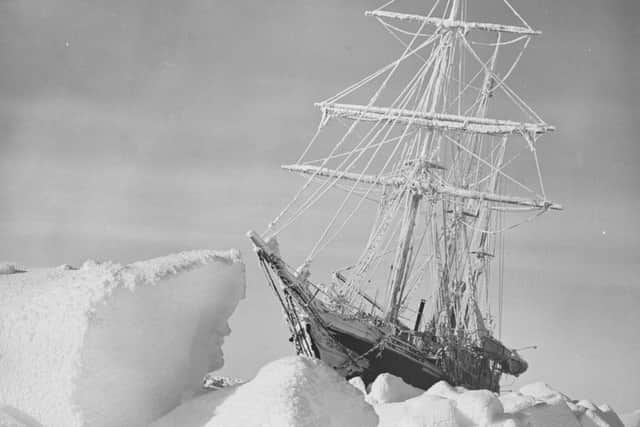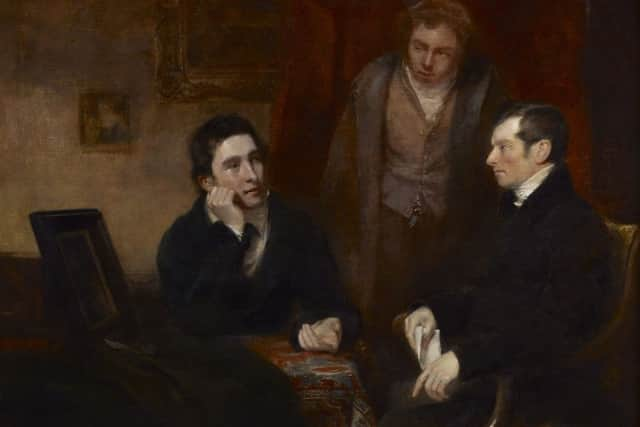Art reviews: Scottish Portraits 1700-1950 | Barry McGlashan | Enduring Eye


Scottish Portraits 1700-1950 ****
Fine Art Society, Edinburgh
Barry McGlashan: The Glass Mountain ****


The Scottish Gallery, Edinburgh
Enduring Eye: The Antarctic Legacy of Sir Ernest Shackleton and Frank Hurley ****
National Library of Scotland, Edinburgh
For Ramsay, too, individuality was never qualified by gender and by the general habit of seeing men as more individual than women, who could be reduced to cyphers by misplaced flattery. Thus Ramsay became one of the greatest of all painters of female portraits and there is a wonderful example in a small but choice exhibition of Scottish portraits at the Fine Art Society.


Advertisement
Hide AdAdvertisement
Hide AdThe sitter is Mrs Hannah Lowfield Turner. She was 75 when her picture was painted and it is a typical Ramsay half-length oval. She is erect and turning towards us. Her face in three-quarter view is painted directly and without flattering gloss or appeal to softening stereotype. As a widow, she is dressed in black, but this is offset by delicate and beautifully painted white linen. Her grey hair is just visible and this also frames her face. It is as austere and unadorned a piece of face-painting as you could wish for and that of course is its great strength. She is a person as complete and present to us now as she was to the painter then.
Another portrait by Ramsay of an unknown girl, painted some dozen years earlier, shows how much he had progressed, but also how in his early work he really did just paint the face, leaving the costume, that he painted so beautifully in Mrs Turner’s portrait, to a drapery painter. Here too though, even though he is dealing with a young lady whose portrait it would have been normal to prettify, he does not succumb to such dishonest convention, but paints her as she was. You would know her if you met her in the street. Nevertheless, convention endures. The young lady’s portrait is valued nearly four times more highly than the widow’s.
There is much else in this show to remind us how good Scottish portrait painting was. John Alexander’s portrait of Lady Catherine Gordon is contemporary with, but not nearly so sophisticated as those of Ramsay, but it nevertheless has something of the same directness and integrity. There is also a painting by Andrew Geddes of himself with John Burnet and Anthony Stewart, all Scottish artists in London, and deep in conversation about a painting propped up in front of them. It is beautifully painted, but it is also very evocative of a moment when, led by Wilkie, Scottish artists were a distinct and influential group in the south. It surely ought to be a picture for the Scottish National Portrait Gallery, particularly as neither Burnet, painter and engraver, nor Stewart, miniature painter of royalty and first to portray the young Victoria, are properly represented in the collection.
Most notable among the other portraits are a wonderfully animated painting by William Kidd of the actor John Toole, on stage and threatened by the shadow of a hand holding a pair of scissors, and a lovely, tender painting by Cecile Walton. Called Early Morning it shows a little girl waking her mother, presumably the artist, by gently brushing her hair.


Nearby at the Scottish Gallery, Barry McGlashan takes his inspiration from the art of the past and, although not directly from portraiture, principally from that part of the western tradition that first engaged with the world around us and how we see it. One of his great heroes is Peter Brueghel the Elder, a painter who could reasonably be called the father of modern art because he took the viewpoint of the ordinary man and woman, of the individual, as witness, but witness too of human folly. McGlashan’s tour de force here is Northern Bacchanal. It is a wonderful homage to Brueghel’s multi-figured landscapes, and as with Brueghel, this snowy townscape is a general riot of bad behaviour while the painter looks out on the scene from the high window of a pub.
Continuing his homage to Flemish 16th-century painting McGlashan paints Joachim Patinir in turn painting one of his landscapes that are reputed to have pioneered the form. He also paints an imaginary portrait of a Flemish artist striding through the landscape that was his subject and the same figure appears in one of his rather good drawings. But McGlashan’s fascination with the strange wide and empty landscapes of the past also extends to Caspar David Friedrich. A favourite motif borrowed from the German master is a lonely figure seen from behind contemplating the vastness of the world. McGlashan is also a brilliant technician, however, and among other things master of tromp l’oeil painting. A canvas turned to the wall and a pin board covered in scraps of paper are both painted with the same delicate precision and convincing illusion that painters achieved in the 17th century. Then as now perhaps, painted pin boards like this were intended as a kind of emblematic self-portrait and a demonstration of the artist’s skill.
One of McGlashan’s most effective images is of a woman carrying sticks through a winter landscape. Indeed winter is a favourite theme and another nice example is a ship among misty ice floes like the ship lost in the southern ocean in Coleridge’s Ancient Mariner. This, however, was the real fate of Shackleton’s ship, Endurance, stuck in and then eventually overwhelmed by the Antarctic ice. The subsequent terrible experiences of Shackleton himself sailing in an open boat to find rescue and of his remaining men marooned for months in the Antarctic are legendary. The story is also now the subject of an exhibition, Enduring Eye: The Antarctic Legacy of Sir Ernest Shackleton and Frank Hurley at the National Library of Scotland. Hurley, a photographer of great skill, was part of Shackleton’s team. Even though he had to abandon a large number of his heavy glass negatives, enough survived to give a gripping visual account of what happened. Hurley even managed to make a film of the Endurance’s last moments as she was crushed by the ice. The quality of his surviving work is generally such that it can easily be blown up almost to life-size without losing definition. The National Library has created this exhibition principally from these enlarged photos. They give a gripping and often visually stunning account of this whole terrible saga.
*Scottish Portraits runs until 21 October; Barry McGlashan until 30 September; Enduring Eye until 12 November